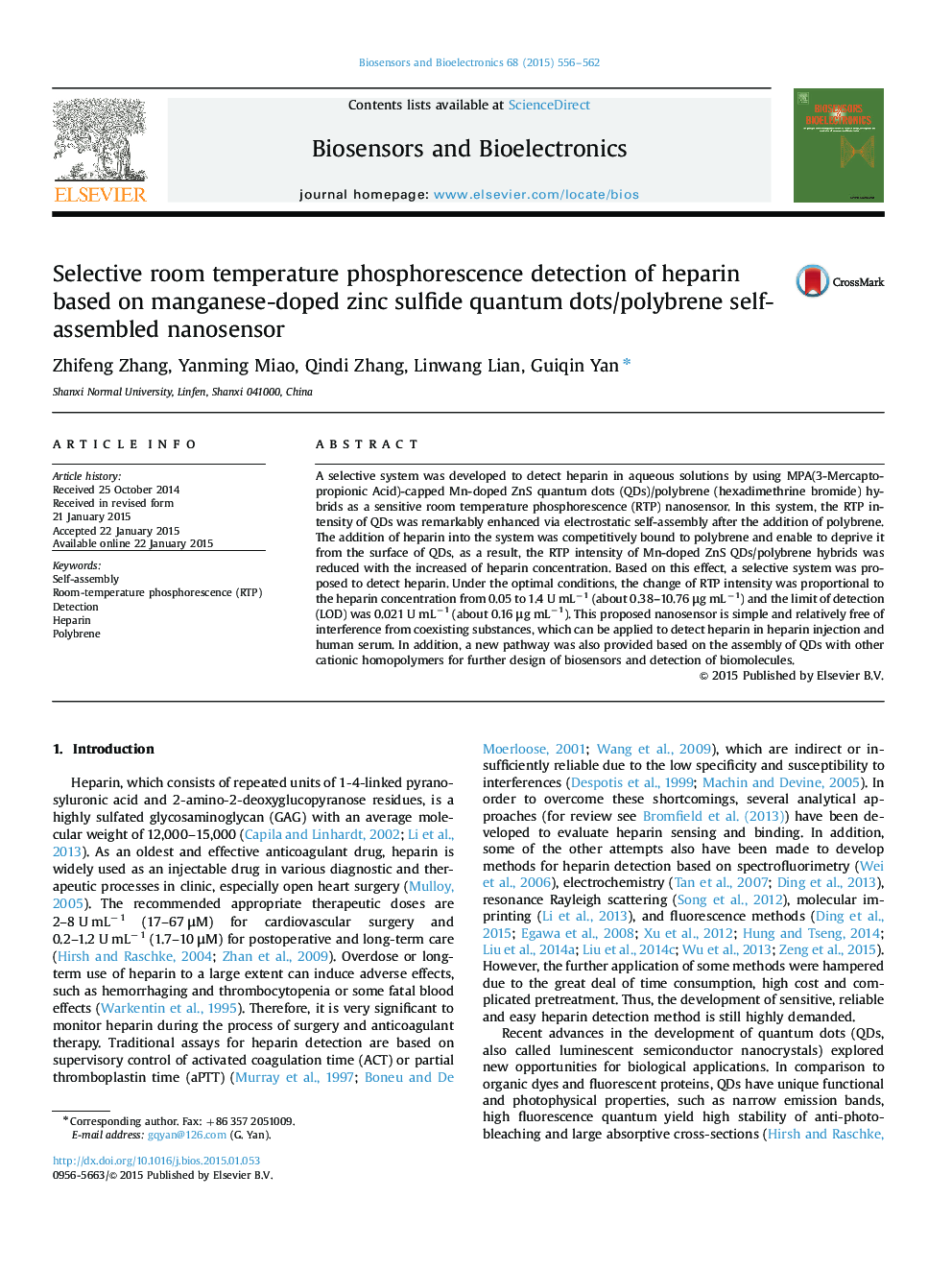| Article ID | Journal | Published Year | Pages | File Type |
|---|---|---|---|---|
| 7232664 | Biosensors and Bioelectronics | 2015 | 7 Pages |
Abstract
A selective system was developed to detect heparin in aqueous solutions by using MPA(3-Mercaptopropionic Acid)-capped Mn-doped ZnS quantum dots (QDs)/polybrene (hexadimethrine bromide) hybrids as a sensitive room temperature phosphorescence (RTP) nanosensor. In this system, the RTP intensity of QDs was remarkably enhanced via electrostatic self-assembly after the addition of polybrene. The addition of heparin into the system was competitively bound to polybrene and enable to deprive it from the surface of QDs, as a result, the RTP intensity of Mn-doped ZnS QDs/polybrene hybrids was reduced with the increased of heparin concentration. Based on this effect, a selective system was proposed to detect heparin. Under the optimal conditions, the change of RTP intensity was proportional to the heparin concentration from 0.05 to 1.4 U mLâ1 (about 0.38-10.76 μg mLâ1) and the limit of detection (LOD) was 0.021 U mLâ1 (about 0.16 μg mLâ1). This proposed nanosensor is simple and relatively free of interference from coexisting substances, which can be applied to detect heparin in heparin injection and human serum. In addition, a new pathway was also provided based on the assembly of QDs with other cationic homopolymers for further design of biosensors and detection of biomolecules.
Related Topics
Physical Sciences and Engineering
Chemistry
Analytical Chemistry
Authors
Zhifeng Zhang, Yanming Miao, Qindi Zhang, Linwang Lian, Guiqin Yan,
